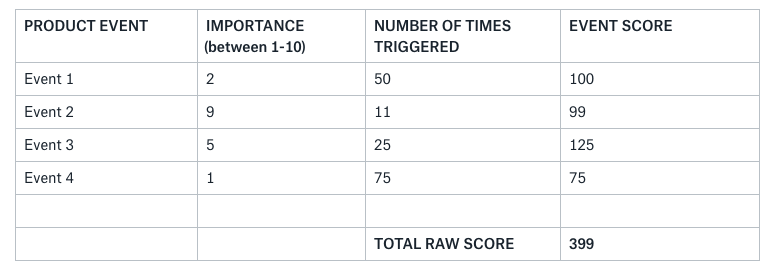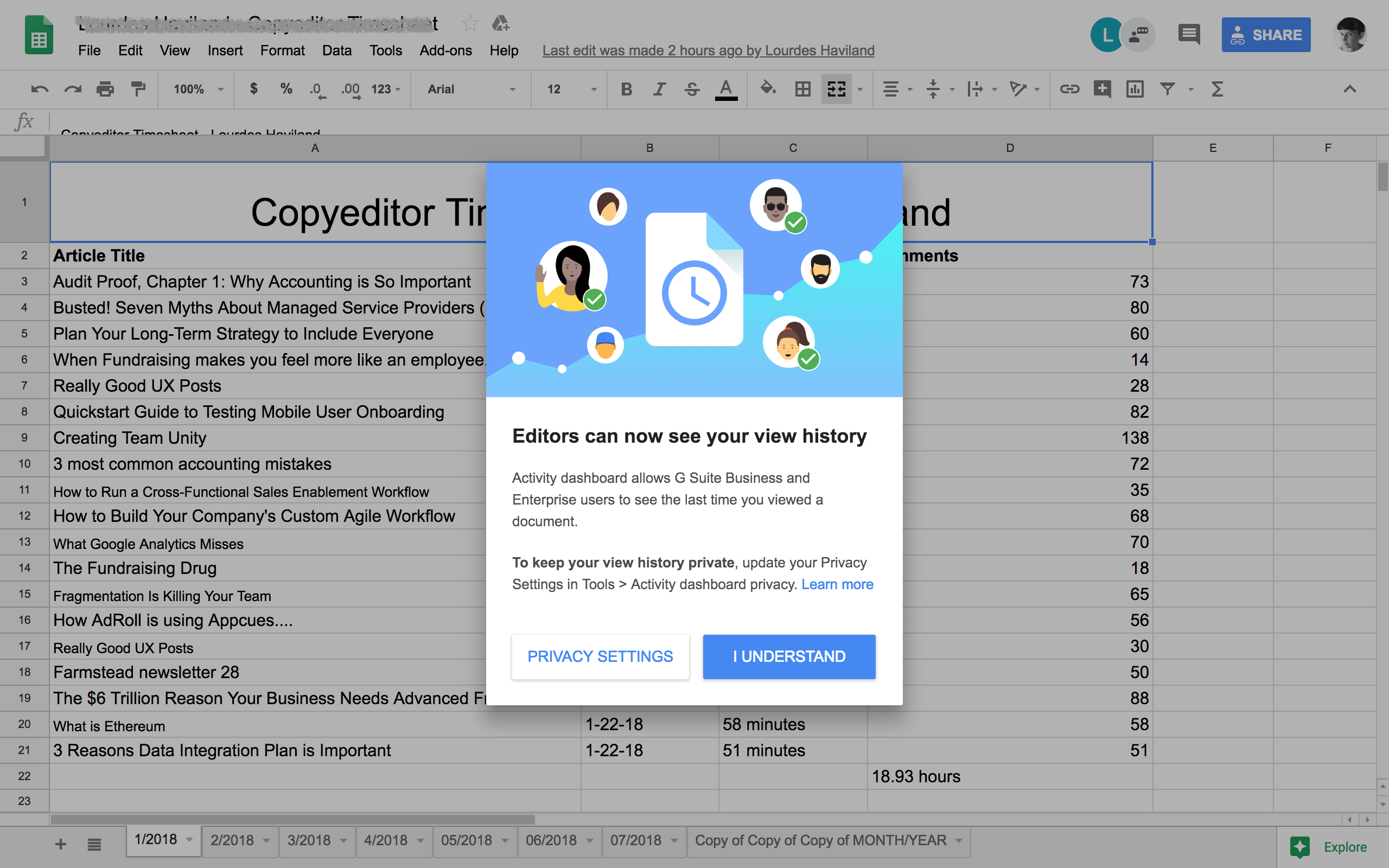7 reasons you should be quantifying user engagement

.png)

.png)
“The goal of a SaaS CEO should be to increase the profit they make from each customer (LTV), and lower the costs in sales and marketing that it takes to acquire each customer (CAC). Measuring Customer Engagement is a key tool that will help you achieve that goal, as it will allow you to increase your trial conversion rates, which directly reduces CAC. And it will help you lower your churn rates, which directly increases LTV.”
- David Skok
Customer engagement is the lifeblood of every SaaS business.
Without it, there really isn’t a SaaS business—certainly not a good one. This is because the SaaS business model is based on retention. With SaaS, you simply must keep your customers paying month-over-month for a long time in order for the model to work.
But if people don’t use your product, they will stop paying for it. (Well, in most cases. I think my father is still paying for an AOL subscription).
No engagement, no retention, no business. It’s pretty much that simple.
Even given its fundamental importance to the entire business model, the vast majority of SaaS businesses are not measuring user engagement in any systematic or quantitatively way.
Why?
Mostly because quantifying user engagement is not easy (trust me, it’s a lot simpler in theory than it is in practice). But perhaps the other reason is that companies don’t fully understand how many pieces of their SaaS organization could benefit from quantitative user engagement measurement. Which leads to this post.
While certainly not exhaustive, here are 7 reasons why every SaaS business should be quantifying user engagement:
Great question. I may have jumped the gun a bit here.
And full disclosure, we built Sherlock (our user engagement scoring application) to help SaaS companies do just this.
While how to actually quantify user engagement is a topic of its own post, I’ll try to summarize it here for context.
When we talk about quantifying user engagement, we’re talking about creating a model for scoring the engagement of each user based on (a) the number of times they do certain things in your product; and (b) the importance of those activities.
It looks something like this:

By doing this you will give every user his/her own engagement score (you should then normalize the scores between 1-100 so they are easier to understand and use) for your engagement period (daily, weekly, monthly—up to you). When you do this, you can create scores:
This is what we mean when we say “quantifying user engagement”. It’s not just a single metric—it’s a scoring model that can be applied in all these different ways and drive value across your organization. With that said, let’s get back to the 7 reasons why you should go through the effort of creating the engagement scoring model.
Little shout out to Peter Drucker with this first one.
I know, this adage is kind of a business cliche at this point, but cliches become cliches because they strike at some universal truth. And this cliche really resonates when it comes to user engagement.
If you believe that your SaaS business is dependent on strong user engagement, then you want to be able to manage it. You want to see it go up. But how do you know if it’s going up if you don’t measure it? How will you know if your efforts are working it if there is no way to track it?
If you want to manage it, measure it.
Do you have a freemium or trial plan for your product? Do you have a sales team?
If you answered yes to both of these questions, then I imagine that you would like to focus your sales efforts on the free/trial accounts that are most likely to convert to a paid account, right? The accounts that are most likely to convert are those that are most engaged with the product.
I know this sounds obvious, but many, many SaaS companies are still siccing their SDRs after any and all accounts that signup, which means they need a lot of SDRs. All with low conversion rates, which means high burn. Then a series of ugly board meetings. Then a big down round. A founder “departure” and a fire sale. Fun stuff.
Ok, maybe I got a little carried away there, but the point is optimizing the time and efforts of a sales team is always important. And if you have a freemium/trial offering, there is no better way of qualifying potential paid conversions then to focus on the accounts that are engaged with the product. In fact, product engagement is the foundation for Product Qualified Leads (PQLs)—a new way smart SaaS businesses are qualifying leads for their sales team.
It all starts with quantifying engagement.
Managing SaaS accounts without clear, easily accessible, quantified user engagement information is essentially working in the dark. Top CS teams should have engagement scores for all their accounts as well as the users on each of those accounts at their fingertips.
There are many ways where this data becomes really important in the CS process:
Proper engagement scoring will also help you become more effective in your product messaging.
For example, highly engaged users don’t really need to be blasted with product emails. They are in the product, so you can focus on in-app messaging for that group.

The opposite for unengaged users. Since they aren’t using the product, you’ll need to reach them on email.
Also, how you message new features can be completely different as well based on engagement level. Your most engaged users are the ones that are most responsive to new product features, so you can be aggressive promoting new features to this group. For example, the messaging might say: “We just made your experience much better!”
Less engaged may not need to hear about a new feature at all. I mean, they’re not even using the existing features. Or, you may notify them, but couch the message a little differently: “Still not convinced about our product? This might help!”
Talk about personalizing the experience for your user base!
Have a referral program? Pinging your entire customer base with referral requests is a waste of time and energy. Unengaged users are certainly not going to refer your product to someone else, so don’t ask them to. This not only wastes “attention capital”, but it also makes you look a bit dumb. (One of my basic rules of marketing is “try really hard not to look dumb”).
Focus these programs on those users that are most engaged for a much better use of your messaging capital.
This is really just scratching the surface of how you can use engagement in your messaging efforts. The main point is that engagement should be a factor in ensuring that your messaging is personal and relevant.
Building advocates is super important for any SaaS business. Advocates not only drive referrals, but can serve as your best source of product feedback, ideas, case studies, and more.
And your highest potential advocates? Your most engaged users, obviously. By quantifying user engagement, you’ll be able to identify these potential advocates immediately and on a regular basis.
Advocates are a source of riches across the business. Score engagement to make the process of identifying them as easy as possible.
*BONUS: The best way to find more great users is to find people that are like your current great users. Use your most engaged users to feed Facebook Lookalike audiences and drive potential great users into your sales funnel. If you know a group of people are loving your product—go get more just like them! (The major assumption is that Facebook lookalike technology is as magical as it claims)
All product teams are building features and user experiences with the goal of driving world class user engagement.
But without a consistent way to measure engagement at the product level over time, how will they ever know if their hours of work is paying off?
For a SaaS business, user engagement is a leading indicator. This means it is predictive of future business performance. If your user engagement is going up, you can predict more account expansion. If your user engagement is going down, you can predict more churn.
Granted this is not an exact science and not necessarily simple, but it is possible. Finding true leading indicators for your business is very rare, but user engagement is definitely one. Don’t let the opportunity or tracking a true leading indicator pass you by.
While this list is by no way exhaustive, I hope it is enough for you to see how important quantifying user engagement is for your business. It is much more than a simple metric. It is something that can have a significant impact on business processes across your entire SaaS organization.
In that sense, it may just be the MOST important metric for any SaaS business. But, of course, I may be a bit biased 🙂.
As mentioned above, we built Sherlock to make it easy for all SaaS businesses actually quantify user engagement—and integrate it with all their essential business functions. We would love for you to check it out—you can start your 17-day trial today!